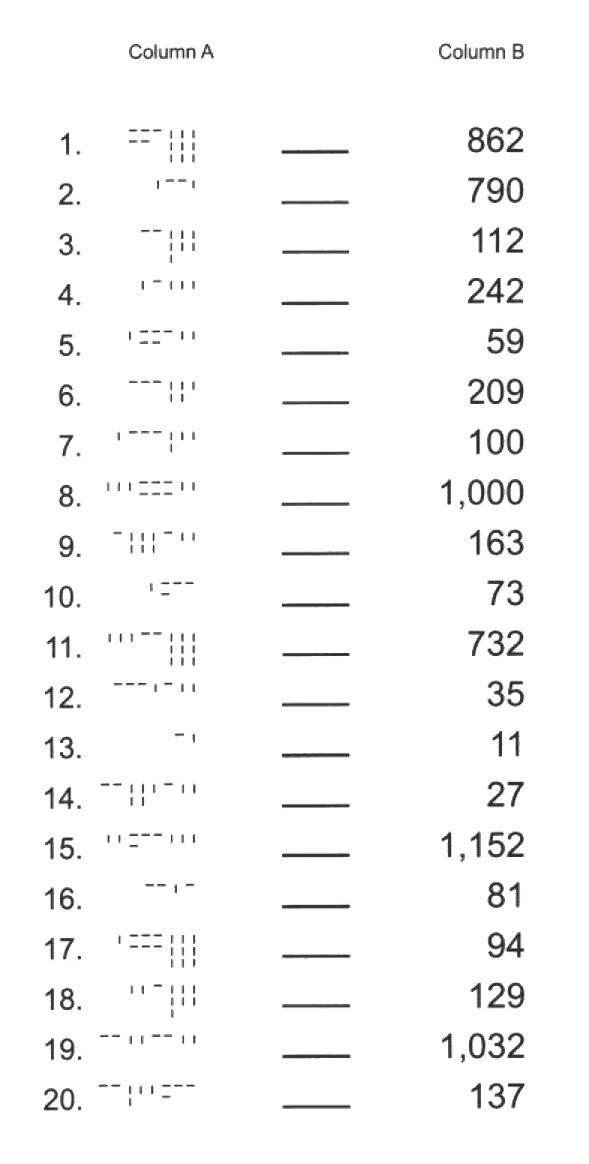Cognition
How to Think: Cracking the Code
Practice thinking to rehearse complex problem solving
Posted January 21, 2022 Reviewed by Hara Estroff Marano
Technology can make us more efficient but not necessarily more effective. Our complex brains are what make us effective, but most of the time we don’t make good use of our ability to think. Thinking takes practice! Our brains are so good at extrapolating information that it takes intentional effort to slow down and think about what you’re doing and why you’re doing it.
Think about how young children see written language—at first all the markings in a book seem like random marks. Before they know the alphabet, all the markings on the page are completely meaningless. Even after they learn their letters, most children still have to make considerable effort before they can master reading. If children can decode this complex system, then we adults can achieve similar feats.
When children learn to read, they are absorbing a lot of information, filtering it through their mind, comparing and contrasting, and finding ways to penetrate what at first must seem like a closed system. The system opens up through little clues—saying letters out loud, recalling how a simple word is pronounced and seeing it on the page, using knowledge of how to read a simple word like cat to figure out how to say a slightly more complicated word like catsup.
Almost everyone has had some experience with decoding different types of systems. Learning the Arabic numerical system, a foreign language, a computer system, the customs of another country are just a few examples of how we decode systems in order to operate effectively within them.
Think about what happens when someone joins a team in your organization—someone who is either new to the team or the company itself. The new member knows little about the team’s history or each team member’s history and how the team members interact. Policies and procedures have probably been put in place as well as informal agreements about how the team works.
The new member can’t absorb everything at once and decode the system instantly. Instead, she needs to make mental connections based on bits and pieces of information. Using this information, she can take incremental steps toward understanding the system, starting small and working toward a larger understanding.
When the new member first joins the team, she will be disoriented by the new system—things don’t work the same way they did on a previous team. Initially, she must tolerate a great deal of ambiguity, uncertainty, and complexity, until she gets her bearings. But she must decode the system if she is to become a productive member of the team.
In the exercise below, you must “crack the code” of the Babylonian number system. On the right, under the heading Column B, you’ll see an assortment of familiar Arabic numbers. Under the heading Column A, you’ll see an assortment of hash marks—ancient Babylonian numbers. To solve the puzzle, write the Arabic number on the horizontal line next to the corresponding Babylonian number.
Start by thinking about some of the things you already know about number systems. They have:
· Hierarchical order (smaller values to larger)
· Consistent sets of rules
· Recognizable patterns
· Multiple bases—for example, the number 25 actually mean 2 multiplied 10 times plus 5 multiplied 1 time (2 x 10 + 5 x 1)
To make things easier in the exercise below, I have used Arabic numbers to the right of the Babylonian numbers for easy reference. Each Babylonian number consists of vertical and horizontal marks, and some numbers have more marks than others.
Hints:
- On the left are some hints to help you narrow down your responses.
- Just as with the Arabic numbers you’ve been using since grade school, the Babylonian system puts the smallest valued number on the right—so in the number 862, the 8 represents 8 hundreds; the 6 represents 6 tens, and the 2 represents 2 ones.
- The base changes, so you won’t be able to solve the problems simply by counting the number of vertical and horizontal marks. Sometimes you’ll have to multiply. For example, in the number 862, 8 actually means 800 or 8 x 100.
- Look at the numbers in Column A, as the hint above notes, a group of marks to the right of a Babylonian number represents a lesser value than the group of marks on the left. Also, the Babylonians used groups of vertical and horizontal lines, so the change in direction must be significant.
- Look at Column B. The smallest number is 11. If this is a match for line 13, then a vertical mark on the far right of a Babylonian number represents a value of 1. A horizontal mark to the immediate left represents a value of 10. We know that 10 + 1 = 11. So the answer to line 13 is 11.

Learning how to function effectively in confusing, overwhelming environments can give you a competitive edge. Most people have trouble functioning effectively in these environments. They look at a project in the same way you looked at the Babylonian numeric system and say, “This can’t be done.” They may complain that they don’t have enough information, time, or resources to meet the project goals. This may be true, but it’s still possible and necessary to decode this perplexing new system.
Doing exercises like this one helps increase your tolerance for change, complexity, and ambiguity. With rehearsal comes less stress and anxiety. The exercise may still be difficult, but you’re in a better state of mind to do them. When you look at an ancient number system and admit that you haven’t a clue, this admission provides the basis for learning. By admitting your ignorance and then moving forward, you’re demonstrating to yourself that a lack of comprehension can be a catalyst to greater knowledge.
Answers: 1. 59; 2. 81; 3. 27; 4. 73, 5. 112; 6. 35; 7. 94; 8. 242; 9. 732; 10. 100; 11. 209; 12. 1152; 13. 11; 14. 1032; 15. 163; 16. 790; 17. 129; 18. 137; 19. 862; 20. 1000.




